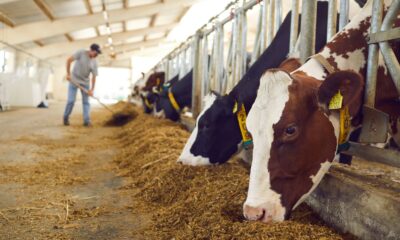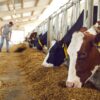Groundnut sowing in Gujarat has significantly increased after two years, with farmers opting for this oilseed crop over cotton. The latest data from the Gujarat Directorate of Agriculture indicates a shift in crop preference during the current Kharif sowing season.
Increase in Groundnut Sowing:
As of July 22, farmers in Gujarat have sown groundnut in 18.28 lakh hectares (lh), an increase of around two lakh hectares compared to the 16.35 lh recorded at the end of the 2023 Kharif season.
This marks a notable rise, with groundnut sowing currently at 104.38% of the average annual acreage of 17.51 lh over the past three years. It’s the first time since the 2021 Kharif season that groundnut sowing has exceeded 18 lh. The region’s average groundnut acreage from 2019 to 2022 ranged from 16.88 lh to 21.62 lh.
Decline in Cotton Sowing:
In contrast, cotton sowing has declined despite remaining the largest single crop in the state. This year, 22.34 lh of cotton was sown a decrease from 26.24 lh in the corresponding period of the 2023 Kharif season.
The current cotton sowing area is 89.54% of the average of 24.95 lh over the last three years. This trend reflects a shift in farmer preferences due to various challenges associated with cotton cultivation.
Regional Trends and Factors Influencing Crop Choices:
In Gujarat, particularly in the 11 districts of Saurashtra, a significant increase in groundnut sowing and a corresponding decline in cotton acreage have been reported. For instance, groundnut sowing in Saurashtra has increased from 12.58 lh last year to 14.55 lh this season. Notably, groundnut sowing in Amreli and Rajkot districts has risen from 1.511 lh to 2.07 lh and from 2.26 lh to 2.66 lh, respectively. Conversely, cotton sowing in these districts has decreased from 3.65 lh to 2.98 lh and from 2.44 lh to 1.81 lh, respectively.
Similar trends are observed in five to six districts of north Gujarat, where groundnut acreage has increased from 2.98 lh to 3.20 lh, while cotton sowing has decreased from 2.35 lh to 1.81 lh.
Jinesh Kanani, the district agricultural officer of Amreli, attributes the shift to several factors, including the pink bollworm pest attack, which affected yields due to uncertified seeds and monocropping.
Additionally, late rains have reduced cotton yields, and the market price for cotton has not met farmers’ expectations, making groundnut a more attractive option. Groundnut, a shorter 100-120 day crop compared to the 180-day cotton crop, allows for a subsequent Rabi crop and requires less labor.
Price Trends and Government Support on Groundnut Sowing:
In the 2023-24 Kharif marketing season in Gujarat, groundnut prices averaged around ₹6,000 per quintal, slightly lower than the previous year’s rate of ₹6,250.
However, the Union government has increased groundnut’s minimum support price (MSP) to ₹6,783 per quintal for the 2024-25 Kharif season, up from ₹6,377. The MSP for cotton has also been raised, with medium staple varieties at ₹7,161 (up from ₹6,620) and long staple varieties at ₹7,521 (up from ₹7,020).
Overall Sowing Status:
The overall sowing area in Gujarat is 63.28 lh, which is nearly 74% of the previous three years’ average of 85.58 lh.
This data reflects the changing agricultural landscape in the state, with farmers adapting to market conditions and crop viability.
Get all the latest news on Indian daily post




































